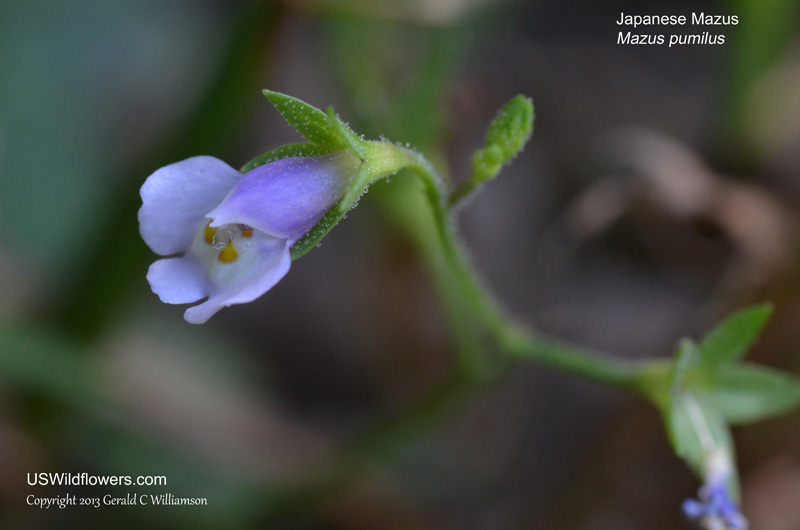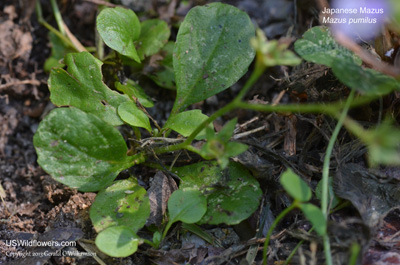Wildflowers of the United States | |||||||||||||
| |||||||||||||
Mazus pumilus - Japanese Mazus. The Mazus genus probably has been feeling like an unwanted 19th century orphan lately, being bounced around from family to family. Originally placed in Scrophulariaceae, a 2002 study by Beardsley and Olmstead placed Mazus, Lancea, and Mimulus in the long-neglected Phrymaceae family. Hardly having time to get comfortable there, publications in 2009 (D. C. Albach et al.) and in 2011 (J. L. Reveal) resulted in the circumscription of a new family - Mazaceae, when Mazus and Lancea were shorn of their close relationship with Mimulus (and others) and place as the only two genera in that new family. Since, as of January 2014 the Integrated Taxonomic Information System (ITIS) has yet to accept this new classification and still has Mazus in Phrymaceae (USDA Plants Database continues to list it in Scrophulariaceae) and I usually follow ITIS in these family squabbles, I am placing Mazus pumilus in Phrymaceae until it's had time to settle into Mazaceae.
| Mazus pumilus (syn. Mazus japonicus,) an annual, is one of about 30 species in the genus, but one of only two found in North America. It and Mazus miquelii (Creeping Mazus,) a perennial, are both introduced species, and both are natives of eastern Asia. Mazus miquelii has a slightly larger flower, and is prone, whereas Mazus pumilus is an upright plant. M. miquelii also has a much smaller distribution in the United States, being found in only 8 states, while M. pumilus is found throughout much of the eastern United States as well as in the Pacific coast states, a total of 29 states. They are both found in lawns and other man-disturbed habitats. Found in: AL, AR, CA, CT, DC, DE, FL, GA, IL, IN, KY, LA, MA, MD, MO, MS, NC, NJ, NY, OH, OK, OR, PA, SC, TN, TX, VA, WA, WI, WV   Map courtesy of The Biota of North America Program. Map color key Search Our Database: Enter any portion of the Scientific, Common Name, or both. Do a general Google search of the entire site: #ad
| #ad
| | ||||||||||
|
Commercial / Cookie Notice Looking for Wildflowers for a specific state? Check here: | |||||||||||||
|
All content except USDA Plants Database map Copyright Gerald C. Williamson 2025 | |||||||||||||
Code Update 20230302


